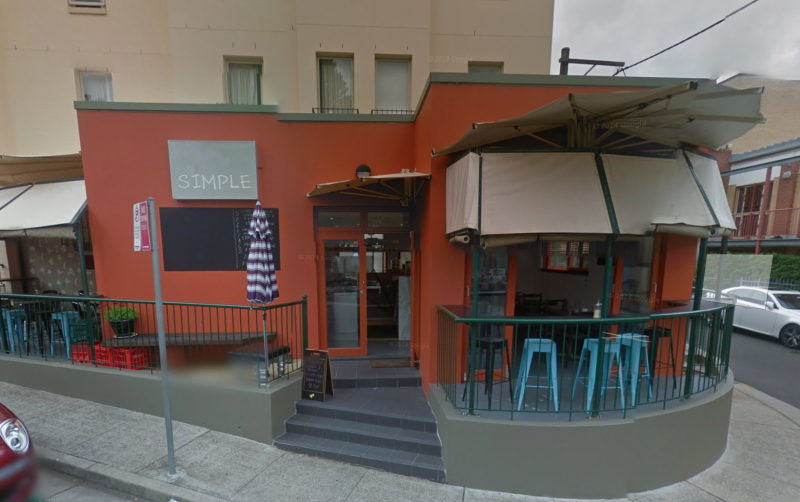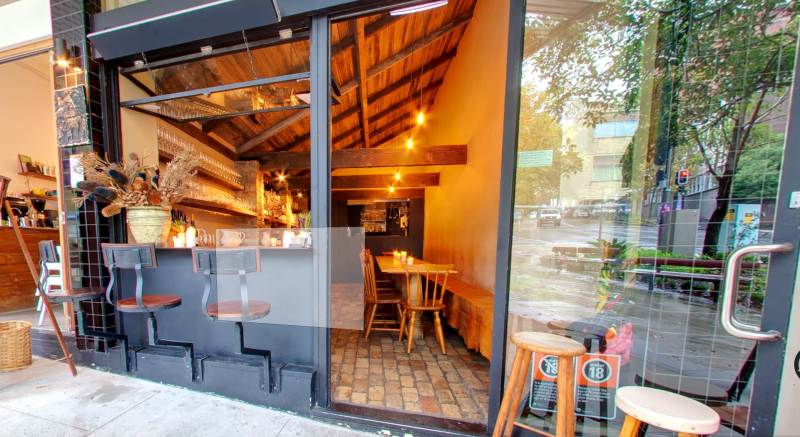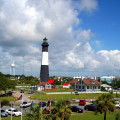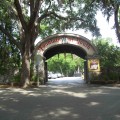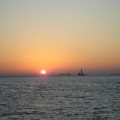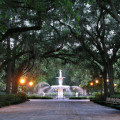Sydney, Australia: Urban Outback
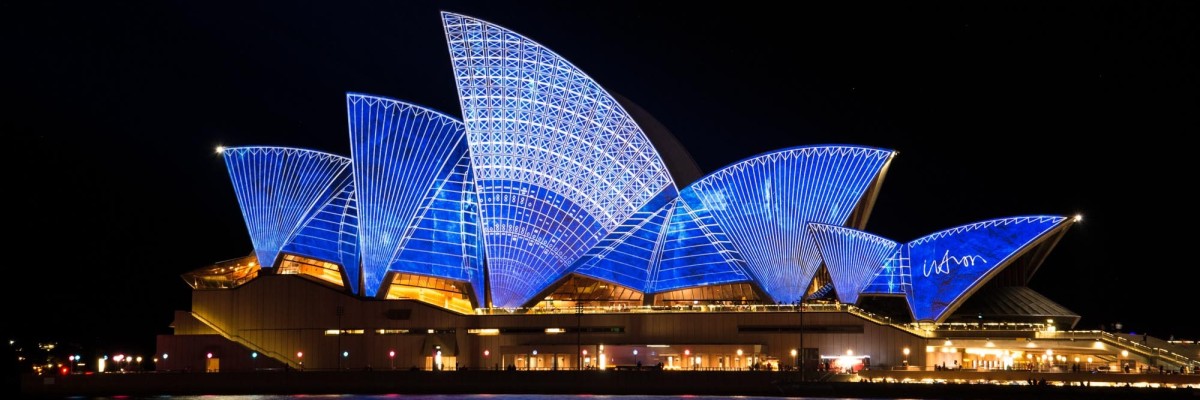
From taming the outback to reconciling with their roots, this city is the result of generations of Sydneysiders taking on a challenge and creating one of the most iconic cities in the world.
Quick History
Carbon dating implies that humans have lived near modern-day Sydney for up to 50,000 years. Native Australians migrated from southeast Asia, and when British explorers landed on their shores the tribe was called the Eora people, which translates from the native dialect to “from this place.” Natives lived on the shore camping, collecting shells and fishing— they were not very pleased to have the British arrive on the First Fleet in 1788. After the United States declared independence in 1776, Australia became Britain’s new dumping grounds for convicts.
With the election of Lachlan Macquarie in 1810 came new improvements that set Sydney down the path of colonization instead of one of crime and punishment. Macquarie spurred a slow, steady initiative to bring trade to the city while also advocating the idea of reintroducing convicts to society as free civilians. By 1850 the flow of convicts into Sydney was over, and within twenty years the population boomed from 35,000 to 200,000.
Although convicts rebelled once in the 1800’s, Australia’s relationship with Britain was one of support. So much support, in fact, that the United Kingdom offered Australia its independence in 1931 but Australia did not truly act upon this offer until 1986. Today, Sydney rivals any British city with its extensive arts community, urban architecture and scientific endeavors.
Where To Go
Sydney Customs House

The Sydney Customs House, a sentinel for centuries. Photo credit: Wikipedia.com
When the Eora people saw unfamiliar ships on the waters of their bay, they could never have known exactly how turbulent their future would be. The First Fleet arrived carrying Captain Arthur Phillip and 850 convicts, ultimately condemning everyone in the area to turmoil in the unfavorable living conditions. This was a place where men carried out their sentences, not a place for trade or farming. Many men began to starve, then a smallpox epidemic in 1789 wiped out an estimated fifty percent of native Aboriginals— “tense” could not begin to describe the climate in Sydney. After the Rum Rebellion of 1808, Lachlan Macquarie became Governor and slowly but surely turned the colony around.
While The Sydney Customs House stands on the same shores were the Eora Tribe first glimpsed the First Fleet, the view could not be more different today. The violent history of the site seems to have mellowed out over time, as even the ghost of a man hanged there is said to swagger around the halls offering guests rum. If that is not quite what you are looking for in your Customs House experience, have no fear. Once filled with customs officers toiling away at their tasks, it is now a massive library with an impressive collection of over 50,000 things to read. If you favor magazines, newspapers, history and a killer view, the Sydney Customs House is the place to be.
Royal Botanic Gardens

Right next to the Sydney Opera House, the Royal Botanical Gardens make for the perfect scenic route. Photo credit: Wikipedia.com
Governor Macquarie had a lot on his plate because, well, he didn’t have anything on his plate. One of the first things he did to turn Sydney into a functioning colony was to begin an intense study of plants. The Royal Botanic Gardens began as a strictly scientific endeavor, making it the first research institution in Australia. Botanists worked tirelessly to create a landscape was functional, later growing to be simply breathtaking. As if the beautiful blooms weren’t enough, architects contracted a Victorian wonder: The Garden Palace.
While the Garden Palace later became The Conservatorium of Music, the influence of the arts is apparent in the way that the gardens capture the eye. Check out the Royal Botanic Gardens website to see exactly what will be blooming during your visit. Plus, a new attraction brings visual art and natural, botanical art to the Royal Botanic Gardens this year! The Calyx brings together science, theatre, and plants to create an intriguing take on how plants influence everything in our lives from what we eat to the clothing we wear.
Sydney Opera House

The Sydney Opera House, an icon. Photo credit: Wikipedia.com
There’s something special in being a part of history in the making, and you can do just that at the Sydney Opera House. The Sydney Opera House is one of the most recognizable buildings of the 20th Century and became a UNESCO World Heritage Site in 2007.
Jørn Utzon designed the opera house and officials quickly noticed his unique proposal in 1957. He won the design competition, although he had never actually visited the site for which he was designing! When construction began in 1959, some people loved the shell design, others hated it, but at the end of the day nobody had a clear idea of how to accurately and safely shape the shells. Creating the shells alone took eight years.
Sympathizing with the construction workers’ plight on the project, singer and activist Paul Robeson performed for them as they watched from the skeleton of an opera house that would some day be an international cornerstone of glamor. Robeson might have received standing ovations if he were to perform “Ole Man River” to an audience at the opera house today, but in 1960 he was awarded a hard hat with his name scrawled across the brim.
The construction workers weren’t the only ones feeling the pressure of building the opera house. In 1966, Utzon resigned due to the government’s anger over how long the project was taking and the ballooning budget. People who once opposed Utzon’s work protested his resignation, but the government completed the opera house on its own accord. It formally opened in 1973, ten years after its original expected completion, and $95 million over the original budget.
Today, you can see the latest in entertainment at the Sydney Opera House. It has everything from “Stairway to Heaven: Led Zeppelin Masters” to a show about deadly animals, to “Beethoven & The 21st Century.” While this is definitely a pricier option on the list, it is practically a wonder of the world at this point.
Grotto Point Lighthouse

Sky or sea, the Grotto Point Lighthouse is the place to be. Photo credit: Wikipedia.com
For a more reflective aspect of Sydney, a visit to the Grotto Point Lighthouse will dazzle you with its view of the harbor. The lighthouse is simple, yet sturdy. Wes Anderson would lose his mind over the unique design and the white picket fence that encloses it. The lighthouse’s signal first shone in 1911 and has served as a beacon for sailors for over 100 years now. From the gas lamp to an electric light, technology has changed but the purpose of the Grotto Point Lighthouse remains the same: to guide people safely to shore.
Ambling down the scenic walkway, a softer side of Sydney emerges. You can spot cormorants, white breasted sea eagles, and the seagulls that yell “mine” from finding Nemo—well, maybe not those seagulls, but this is a birdwatcher’s paradise.
5. Taronga Zoo

If you don’t want to choose between urban and environmental, there’s the Taronga Zoo. Photo credit: Wikipedia.com
If you’re feeling salty about not seeing your favorite seabird, you can check out an entire array of wildlife at the Taronga Zoo. The zoo opened in 1884 with a refined and lax air about it, eventually adding the romantic Rustic Bridge spanning the natural gully below. Come 1967, the romance began to fall flat. Society was picking up speed, and science demanded the attention of the zoo. Leading up to 2000, conservation and education began to take the forefront of the zoo’s priorities. On this foundation, the zoo expanded and renovated parts of the park that pay homage to native Australian wildlife on both land and sea. It also built an exhibit that immerses visitors in an Asian rain forest environment, complete with Asian elephants.
The Aboriginal influence is all over Taronga Zoo, “Taronga” itself meaning beautiful view. One tour in particular, Nura Diya, has an interesting angle that opens visitors’ eyes to the reality of Aboriginal life and the importance of nature. An Aboriginal guide tells visitors stories passed down through generations that describe Aboriginal culture and how it is tied to the land.
Where to Eat
Twenty 8 Acres
It only makes sense that a melting pot like Australia has some of the best fusion food in the world. Twenty 8 Acres is a blend of Aussie and Irish, and word has it that it’s the best tucker down under! Although it only opened in 2013, its reputation is spotless. It touts fresh ingredients and a 5-star meal with a cozy cafe feel. A bit on the pricier side, but totally worth it if you want an amazing breakfast, lunch or dinner.
Fortune Village
An Aussie favorite, this is the place to get Chinese food in Sydney. With classic and modern takes on Chinese food, it has anything and everything. Visitors love it for how fresh the food is, and the only thing even better than the food is the service. Great for a more casual dinner!
Farmhouse King’s Cross
For a truly unique take on dining, check out Farmhouse King’s Cross. Patrons eat at one large table, where chefs emerge from the kitchen to deliver the dishes piping hot. The blend of urban and rustic is one that makes visitors feel the warmth of small town living with the innovation that often comes with the city! Come here to brush elbows with some of the locals.
In Sydney, enjoy the outback feel in the speed of the city! With so much going on, is there anything we missed? Tell us in the comments!




